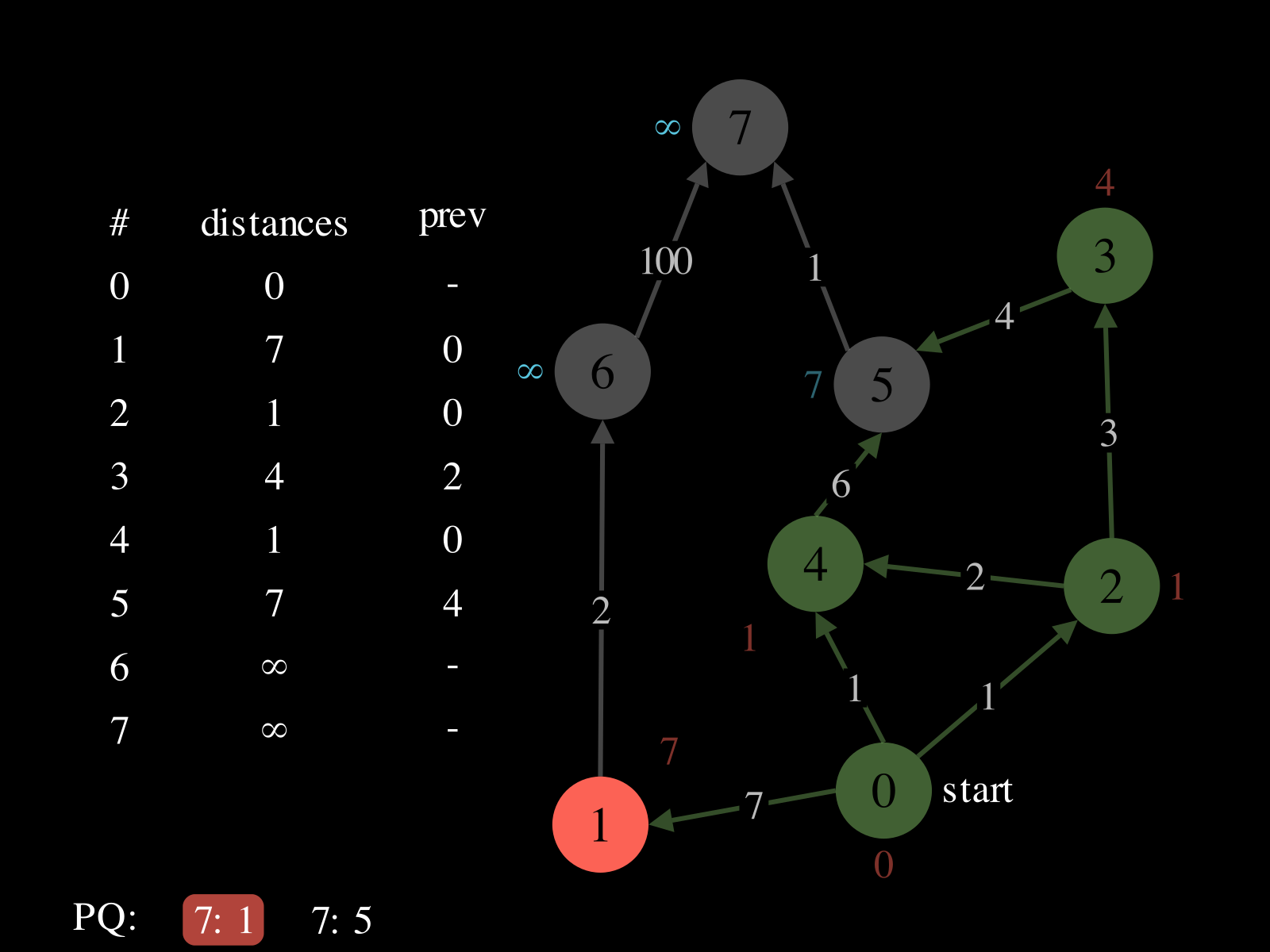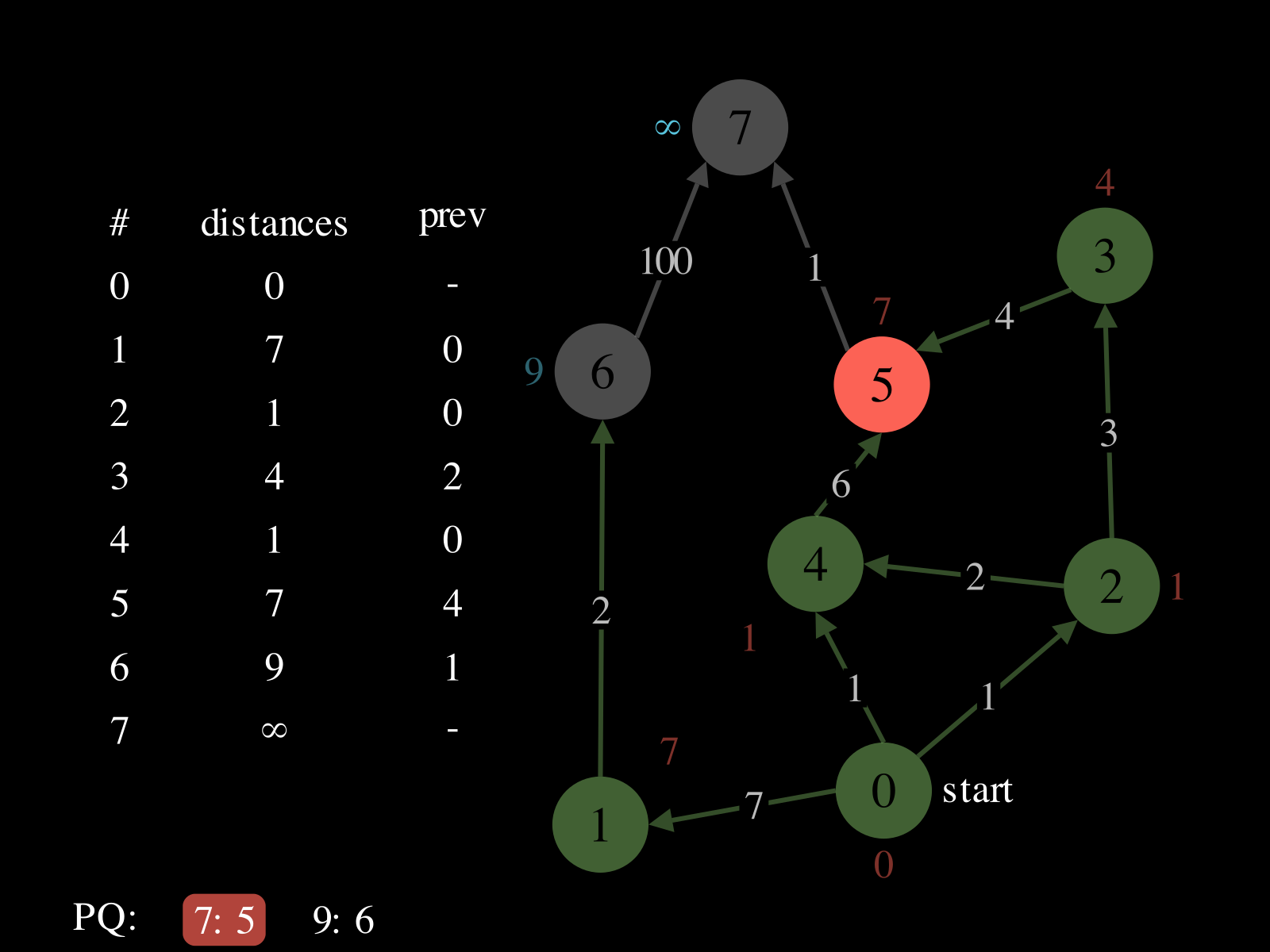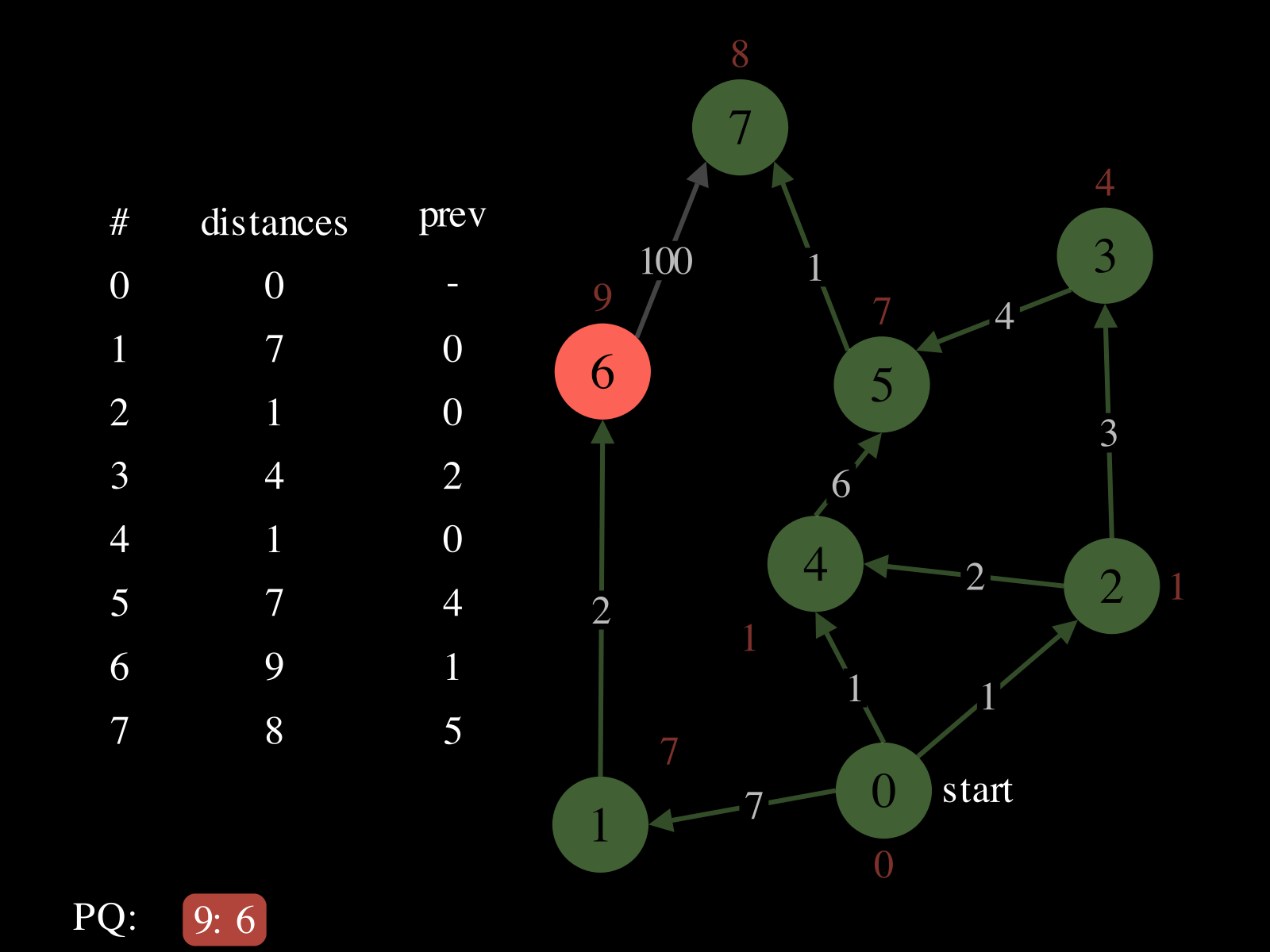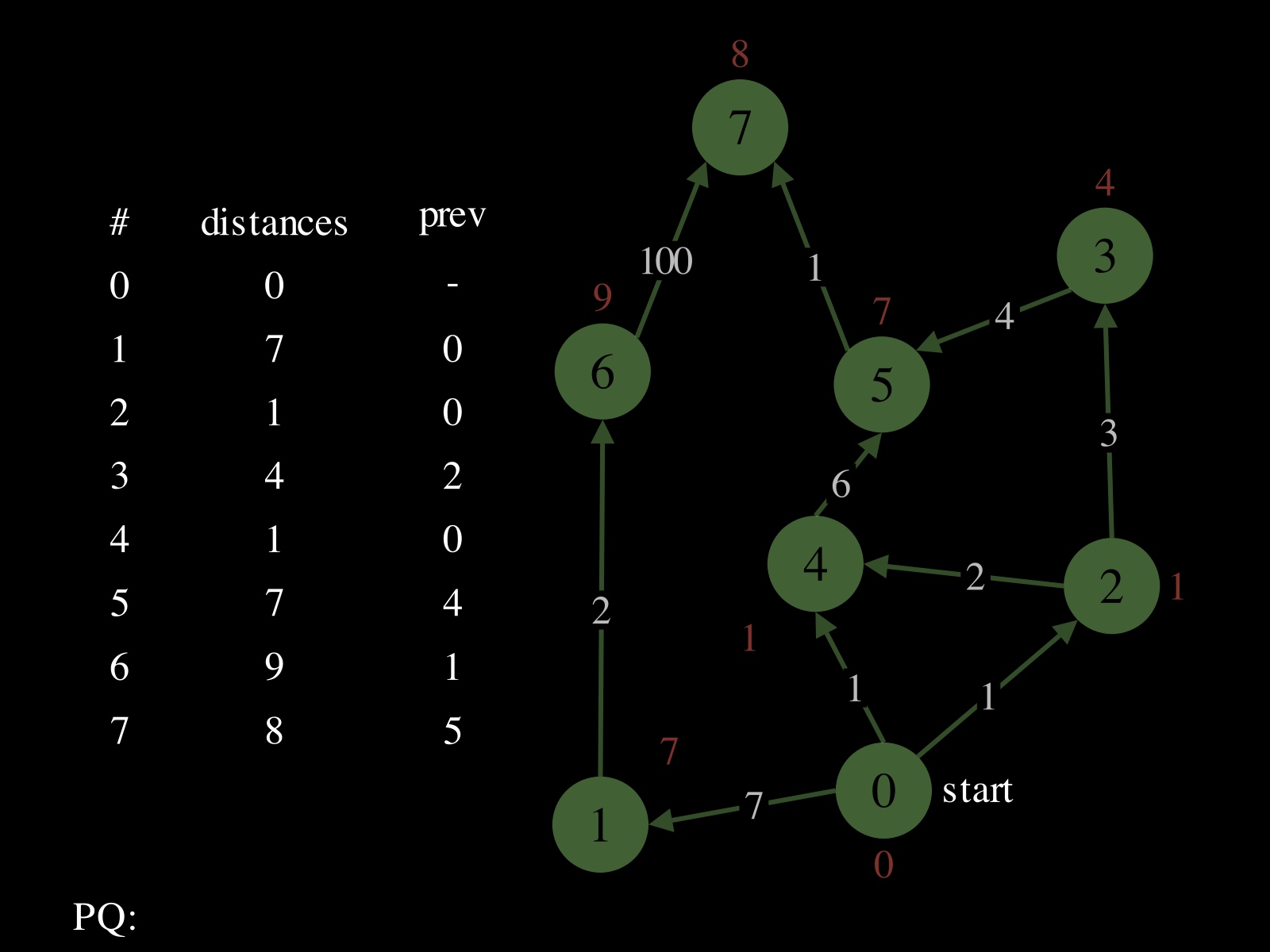Dijkstra's Algorithm
Purpose: Dijkstra's algorithm is used to find the shortest paths between a source vertex and all other vertices in a graph with nonnegative weights. Djikstra's can also solve the more specific problem of finding the shortest path from a start vertex to an end vertex. One use case could be finding directions from Point A to Point B using roads on a map.
Runtime:
O((E+V)logV) for a simple python implementation (see below), where E is the number of edges and V is the number of vertices.
Algorithm Steps:
- Initialize:
- A priority queue
PQ: where priorities are distances and values are vertices - A map
distances: vertex → best distance so far - A map
prev: vertex → previous vertex in best path found so far
- A priority queue
- Repeat until
PQis empty: - Pop vertex
vfromPQ - Relax the outgoing edges of
vby updatingdistances,PQ, andprev. See the picture above to see a relaxation step.
Behavior Slideshow
Slide 0 of 17

Python Code
import heapq
# graph is a map from vertex v => list of outgoing edges
def dijkstra(graph, start):
# dist is a map from vertex v => best distance found so far
dist = {v: float("inf") for v in graph}
dist[start] = 0
pq = [(0, start)]
prev = {}
while pq:
d, u = heapq.heappop(pq)
for neighbor, weight in graph[u]:
alt = d + weight
if alt < dist[neighbor]:
dist[neighbor] = alt
prev[neighbor] = u
heapq.heappush(pq, (alt, neighbor))
return dist, prev
g = {
0: [(1, 2), (2, 1)],
1: [(2, 5), (3, 11), (4, 3)],
2: [(5, 15)],
3: [(4, 2)],
4: [(2, 1), (5, 4), (6, 5)],
5: [],
6: [(3, 1), (5, 1)],
}
start = 0
dist, prev = dijkstra(g, start)
print("distance to 6 should be 10 and is", dist[6])
Concepts and Proof
Coming soon! Maybe.
Credits
Strongly influenced by Josh Hug's Djikstra's explanation from CS 61B, where I first learned Dijkstra's
















